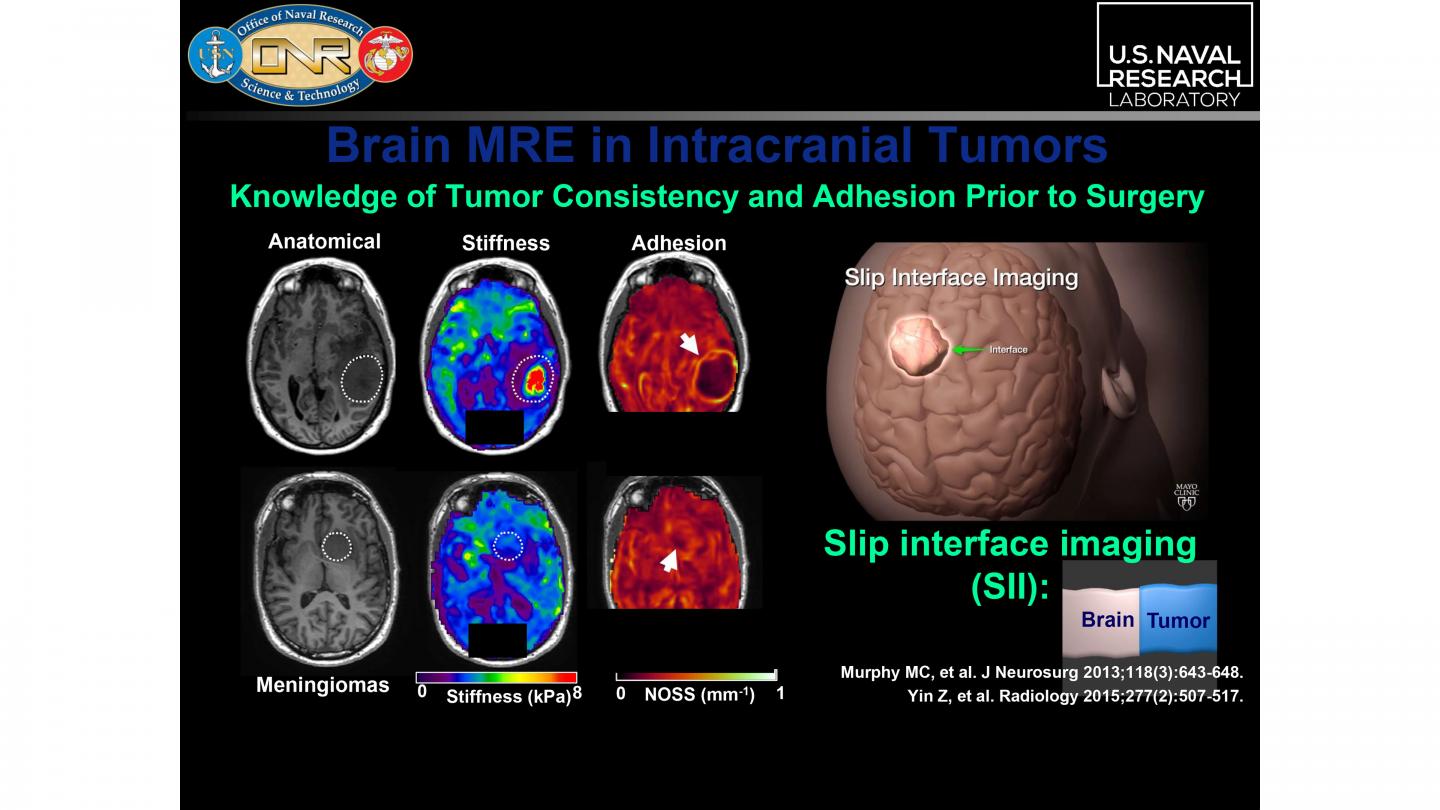Waveguide Elastography Offers Details About Traumatic Brain Injury
A combination of acoustic imaging methods and algorithms offers a better method to explore the brain’s gray and white matter.
Waveguide elastography can help shed light on the characteristics of and severity of traumatic brain injury in a non-invasive way.
By combining magnetic resonance elastography (MRE) and diffusion tensor imaging (DTI) with isotropic and anisotropic inversion algorithms, waveguide elastography gives providers a better picture of the stiffness of the brain’s fibrous pathways, offering up details about any changes or pathologies to white and gray matter.
“It was an ‘aha!’ moment when I realized I could use these technologies with my algorithms to explore both gray and white matter inside the brain,” said Anthony J. Romano, Ph.D., a research physicist with the U.S. Naval Research Laboratory.
Romano described this method in a presentation during the 179th Meeting of the Acoustical Society of America. Initially, he studied acoustic signatures associated with anti-submarine warfare, but he pivoted to apply his submarine-detection algorithms to biomedical application. With this research, he said, an isotropic shear wave equation is used with gray matter, and an orthotropic inversion algorithm is used with white matter.
A noninvasive method to measure the stiffness parameters along fibrous pathways within the brain is helping researchers explore traumatic brain injuries. The stiffness of these tissues can reveal clues about changes and pathologies within the brain's gray and white matter. During the 179th ASA Meeting, Anthony J. Romano will describe the method known as waveguide elastography. Credit: Anthony J. Romano

Using MRE, Romano and his colleagues produce vibrations in the skull and use equations of motion to determine dynamic elastic displacement. Although it is not the same as stiffness, he said, it is related to stiffness via the equations of motion.
“Stiffness is a much more reliable metric than displacement due to [signal-to-noise ratio,] so this method allows us to evaluate stiffness from the measured strain waves within tissues for diagnostic purposes,” he said.
For more coverage based on industry expert insights and research, subscribe to the Diagnostic Imaging e-newsletter here.
With DTI, the team can measure the diffusion of water along the fibrous pathways, such as myelinated axons, that largely make up the brain’s white matter. Those fibrous structures act as waveguides for the anisotropic propagation of sound, and those waves spread at different speeds and stiffnesses in the direction of propagation. And, with gray matter, its stiffness is the same in every direction of sound propagation unless there is a stiffer or softer inclusion, Romano explained.
Related Content: New Magnetic Sensor Picks Up Weaker Brain Waves, Potentially Improving Diagnosis
Therefore, to determine how well this method provides a look at the brain, Romano’s team is using it to study the brains of hockey players from the University of Delaware. Based on pre-, mid-, and post-season imaging of the brain, they discovered significant increases in stiffness as the season went on. More stiffness appeared with each concussion the players experienced, he explained.
Ultimately, he said, the results show that applying algorithms to the evaluation of brain stiffness can help uncover brain health.
Is MRI Contrast Enhancement Necessary for Long-Term Monitoring of Diffuse Glioma?
March 4th 2025In a comparison of contrast-enhanced T1-weighted (CET1w) MRI (and T2-weighted MRI/FLAIR imaging, researchers found that only three out of 82 cases of glioma progression were solely detected with CET1w MRI.